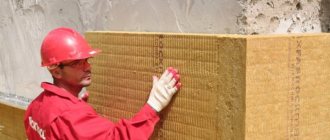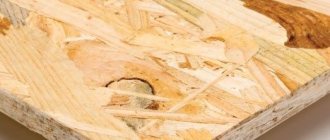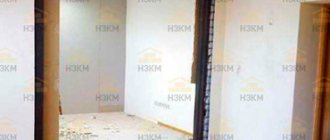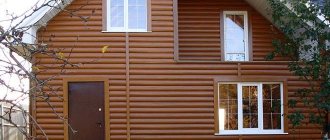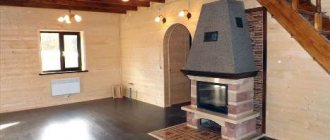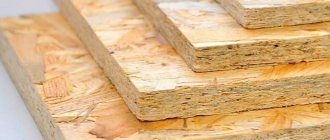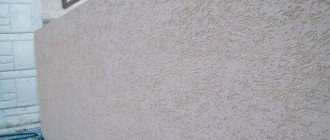Trends in modern housing construction make it possible to build a house from foam or gas blocks, from sip panels or timber, but a brick home still remains the most reliable and prestigious. Erection of the foundation, construction of the box and closing of the thermal circuit are important stages, but without interior finishing of the walls of a brick house, the work will not be completed.
Types of finishing of the facade of a brick house
The huge variety of finishing materials offered makes it possible to choose the one that meets the requirements of the home owner. Among the finishing methods, there are traditional options, for example, plaster followed by painting, facing bricks, lining, etc. There are completely new technologies that use the latest wall materials that have recently appeared on the market. For example, thermal panels.
Let's look at each material separately and briefly talk about the methods of its application or installation.
Plaster
This is the most traditional option for finishing a brick house. Until recently, cement or lime based plaster was used for this purpose. The compositions were prepared directly at the construction site, mixing the components with the addition of water. Today this is not done, because the production of so-called dry mixtures has been established, where the ingredients of the composition are combined in precise proportions, which corresponds to the high quality of the material.
Dry mixtures are simply diluted with water in the required ratios, which are indicated on the packaging of the plastering material. Therefore, it will not be possible to spoil the plaster with incorrect actions.
Plastered facade of a brick house Source m.yukle.mobi
It should be noted that manufacturers today offer several types of plaster compositions, one of them is facade. This is what is used for finishing houses built from bricks or blocks. It confirms its name by the fact that it has special qualities:
- high moisture resistance and frost resistance
; - good strength characteristics
; - good vapor permeability
, which allows the walls
of a brick house to “breathe
”.
Manufacturers today offer several varieties of facade plaster, which differ from each other in the ingredients included in the mixture.
- Acrylic plaster
. This is a cement-sand mixture to which acrylic (polymer) is added. It has excellent diffusion ability and high plasticity, which simplifies its application to walls, but this variety has a short service life, of course, in comparison with other types. - Calcareous
, also
as mineral
.
Essentially, it is a mixture of three components: cement, sand and lime. Today it is the cheapest plaster
on the market.
Lime-cement plaster for external work Source torgdom-shop.ru
- Silicate variety
. It received its name only because the solution contains liquid glass as a binding component. But the base is still the same lime. - Silicone
. This is the most expensive plaster composition, but it works out its price one hundred percent. That is, the layer applied to brick walls withstands natural loads and mechanical stress well, it is a moisture-resistant material, so it can be washed to remove dust and dirt. Typically, walls plastered with silicone material are washed with water pressure. Added to the advantages is a huge variety of colors, which makes it possible not to use finishing painting.
Silicone ready-to-use plaster Source el.decorexpro.com
Method of applying plaster
In fact, this is not an easy process. It consists of several operations that require a professional approach. Here is the sequence of their implementation:
- prime or moisten
the brick wall; - they install beacons
along which
the wall surface will have to be leveled
; - is applied in several layers
, the number of which is determined
by differences in the plane
of the brick wall; - after drying, the beacons are dismantled
, and their installation site is filled with
plaster mortar
; - grind
the surface completely using
a liquid
plaster solution.
Plastering the facade of a brick house Source hu.aviarydecor.com
Facing brick
Decorating a house with bricks on the outside, meaning facing, is another traditional way to change the appearance of the facade of a building. This material is presented in a fairly wide range on the market. But at the core they are bricks with very precise dimensions, especially on the front side, and a smooth surface of the edges. At the same time, the facing brick on its planes does not have defects: cavities, pores, cracks and others.
Today, manufacturers offer facing bricks with cut or rounded edges, with patterns on the front surface, with cracks that imitate the antiquity of the material, and other types. As for the sizes, several options are offered here, where standard brick is still very popular.
Recommendation for choice. If a facing brick of non-standard sizes is chosen for finishing a brick house, then you need to understand that it will not coincide with the band of bricks used in the construction of the building. Therefore, during the cladding process it will be necessary to increase the thickness of the masonry seam.
Decorating a house with facing bricks Source tiilitalo.ru
As for the cladding method, first of all it is necessary to indicate that the foundation of the house will have to be increased in width, at least by the size of the thickness of the facing brick. And this must be taken care of at the stage of designing a house. That is, it turns out that facing a brick house with facing bricks is the cost of building a foundation. And, as practice shows, these costs are quite impressive.
If the task is to brick a house that is already in use, then you will have to use other more modern options for forming a base for brick cladding. One of them is the installation of brackets or planks that are attached to the wall of the building. Fasteners are usually made of durable plastic or galvanized steel.
Facing bricks of different colors Source conti-group.ru
See also: Catalog of companies that specialize in the full production cycle, and the design and construction of turnkey brick houses
Stone
Natural stone is a material that can be called the best option for cladding brick houses. And not only brick ones. It not only has a beautiful structure and unsurpassed appearance. This material is fire-resistant, with high strength characteristics. Easily withstands even significant shock loads.
It copes well with all natural loads. Moisture resistance – 100%. Durability is determined by centuries. Houses lined with natural stone claim a high degree of aristocracy and elegance.
True, it is necessary to point out that stone cladding is one of the most expensive. The process of decorating walls with stone requires professionalism; construction operations are very labor-intensive. In addition, a strong foundation needs to be poured under the stone. Other fastening methods are not acceptable. And one more thing - some types of stone emit radioactive waves. So you need to be careful when choosing this or that breed.
On the market, stone cladding is represented by tiles of different sizes, so-called torn stone or “crust”, chipped tiles.
Brick house trimmed with stone on the outside Source pofasadam.ru
Today, artificial stone, which is made on the basis of a cement mixture, is very popular. In terms of its characteristics, it is not inferior to natural stone, and its appearance is no less impressive. But it costs several times less. The cladding technology is exactly the same. The requirements for the foundation are the same.
Lining
This material also belongs to ancient finishing methods. Brick houses are usually not covered with it. It is a rarity. But sometimes this method is used if the walls of the house are difficult to repair and bring them to the required normal condition. And although today there are other similar materials on the market with higher performance characteristics, lining occupies its niche.
Tile material
There are several types of tile materials that are used for finishing houses built of brick.
Facade tiles
It's clinker. It is made using the same technology as brick. That is, clay is molded and fired. But clinker tiles are a thin material intended specifically for cladding.
House facade finished with clinker tiles Source kblok.ru
The advantages include:
- high frost resistance
; - good strength
characteristics; - variety of colors
; - the material does not fade under
the negative
influence of sunlight
; - moisture resistance
is high.
As for the disadvantages, the main one is the high price. You can add the fact that clinker tiles are afraid of impacts, under the influence of which they become unusable. But even with such nuances, this type of finish is very popular.
Clinker tiles to look like bricks in different colors Source gk-gss.ru
Ceramic tile
Today, many manufacturers offer ceramic tiles that fall into the “facade” category. This is a modern approach to solving the problem of finishing brick buildings. The advantages of this material include:
- a huge variety of design
; - the material has a low specific gravity
, so the loads from it on the walls of the house are insignificant; - If the installation is carried out correctly, you can guarantee the strengthening of the walls
; - the material is durable
,
moisture-resistant
,
fireproof
,
environmentally friendly
; - decorative
application
does not change
its external qualities under the influence
of sunlight
; - ceramics
easily
tolerate sudden changes in humidity and temperature
; - the smooth, low-porous structure
of the front side of the tiles creates conditions under which
neither dust
nor
dirt settles
on the finished surface; - easy to clean
with plain water; - Ceramic tiles easily tolerate
negative
chemical and bacteriological
effects.
The only negative is the complex technology of wall cladding, which requires the experience and qualifications of the work manufacturer.
How to choose plaster
| Type of plaster | Advantages | Flaws |
| Mineral - this group includes plasters made from cement with plasticizing and hydrophobic additives with microfiber fibers. | Durable, long lasting, inexpensive, vapor permeable. | It gets dirty quickly without additional finishing; additional painting is required. Available in dry form. The solution must be applied as soon as possible. |
| Acrylic – plasters made from polymer resins. | It’s easy to use, sets quickly, and is easy to plaster walls yourself. Resistant to mechanical damage, rain and snow, efflorescence. Produced ready-made, the color range is very wide. | Non-vapor permeable. It is not UV resistant and fades and cracks over time. |
| Silicone plasters are made from silicone with various fillers. | Sold ready-made, in a wide range of colors. Vapor permeable, UV resistant, durable. Repels dirt. | High price. |
| Silicate plasters - made on the basis of polysilicon liquid glass. | Creates an almost perfect coating: vapor-permeable, resistant to everything, including mold. | Prohibitively high cost. Working with this material requires high professionalism of performers. |
All these plasters can be either smooth or textured, with fillers made of mineral granules, cellulose fibers, etc., which will give relief to the treated surface.
Here are examples of outdoor work by a member of our portal nadegniy. His albums contain photo histories of each façade, detailing the order in which the work was completed.
A combination of plaster and brick (in inserts and on the plinth) can look great on one wall.
Video description
The video shows everything about facade ceramic tiles:
See also: Catalog of projects of brick houses with facade plaster
Porcelain tiles
Essentially, these are the same ceramic tiles only with higher strength characteristics. The thing is that porcelain stoneware is molded under high pressure. This material has increased density and, accordingly, greater weight.
It has the same advantages as ceramic tiles, but is almost twice as expensive. Today, porcelain stoneware is used not only for cladding the walls of brick houses using “wet” technology. That is, using adhesive compounds. But they install it using ventilated facade technology, for which they use special fasteners.
Insulation technologies
Exterior decoration, by the way, can be different. Now there are two common technologies that determine how best to insulate a brick house from the outside.
"Wet facade" technology
The “wet facade” got its name due to the use of liquid mortars. In general, the technology can be described in 3 points:
- Preparation. Old cladding needs to be removed from the walls. Using a chisel, hammer drill, or steel brush, the entire coating is removed down to bare walls. If this is not done, the new cladding will not be able to last.
- Frame installation. A frame made of aluminum profiles is installed on the walls. They are fixed with dowels. The frame is built in the form of lattices, where the cells are located along the width of the material.
- Applying glue. The frame cells need to be coated with glue. It also smooths out unevenness. There is no need to coat the ends.
- The material is installed in its place.
- Decorative finishing. It could be plaster, clinker, blockhouse.
Video description
The video shows how brick walls are faced with porcelain stoneware using ventilated facade technology:
Siding
This finishing material, having appeared on the Russian market, immediately gained particular popularity. Firstly, there is a wide variety of decorative designs. Secondly, installation using ventilated facade technology, which makes it possible to thermally insulate brick walls and cover them without “wet” processes. Thirdly, siding can always be dismantled and moved to any other surface.
Today, manufacturers offer several varieties of this facing material, which differ from each other in raw materials.
Metal siding
These are products made of galvanized steel sheet with a thickness of 0.4-1.0 mm, coated with paint or a polymer composition. Today on the market you can buy material stylized as wood, stone, brick, sand and other building materials. Siding is formed in the form of panels with a small width and the creation of mounting strips through which installation is carried out on the sheathing.
Like any metal material, siding can withstand natural loads well, but with one condition - the protective layers (paint and polymer) must not be damaged. This finish will last at least 25 years. Some models are guaranteed to last up to 50 years.
Variety of metal siding Source montazh-saidinga.ru
Cork and wood covering
The mounted panels are varnished on top.
Cork panels are used for finishing bedrooms and children's rooms. This material has good sound insulation, has a pronounced texture and intricate pattern, and its installation is not difficult:
- the plug is attached with self-tapping screws to a wooden frame made of a block, previously installed on the surface to be finished;
- the seams between the panels are sealed with a special sealing material;
- The process is completed by coating the panels with varnish.
Various wooden materials are actively used for interior decoration. They do not require additional finishing, as they have an attractive appearance and go well with wooden furniture.
When finishing interior brick walls, the following important features must be taken into account:
- Such coatings should not be allowed to come into contact with moisture.
- When installing wooden coverings, it is necessary to use a membrane vapor barrier, and its fastening must be done on top of the sheathing.
- Wooden finishing boards, lining and other materials are connected to the frame and to each other without gaps, which eliminates the need for additional processing of the seams.
- Wooden coverings have good thermal insulation properties. For more information on how to cover walls with plasterboard, watch this video:
The color range of this material is quite diverse, which allows you to choose the necessary colors that harmoniously combine with the surrounding interior.
What material should I choose for external insulation of a brick building?
Some materials are better suited for finishing walls from the inside, and some are made specifically for external thermal insulation. Below is a list of the most suitable options for insulating a brick house from the outside:
- Mineral wool. This is the most commonly used thermal insulator, which has good performance in terms of water absorption and thermal insulation. But it is preferable to use it for interior work, since its main disadvantage is the deterioration of technical characteristics when exposed to moisture.
- Expanded polystyrene. An equally popular material that is perfect for insulating walls outside and inside. A moisture-resistant material that has excellent thermal insulation properties. Disadvantages include flammability and poor steam transmission.
- Extruded polystyrene foam. It has the same qualities as ordinary polystyrene foam, but has a higher level of strength. It is an excellent option for finishing walls outside and inside.
- Warm plaster. It has many advantages, including high sound insulation, excellent vapor permeability and fire resistance, while there is a low level of moisture absorption. Among the disadvantages is the need to apply a layer, the thickness of which should be no more than five centimeters. If a house is insulated with this type of plaster, a fairly large weight will be noted, which becomes the reason for strengthening the foundation.
